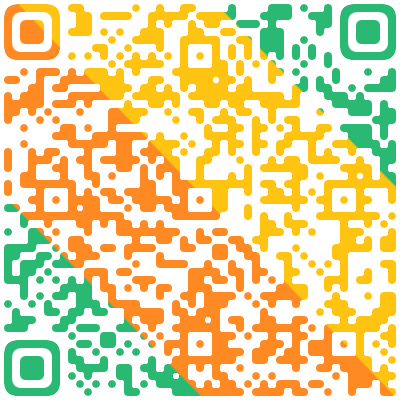seta={1,3,5,7,9} setb={7,9,11,13} print(seta|setb)
查看答案
热门试题
Daily was first released in 1981 and its European Weekly started in 2010, which is____ in nearly 30 countries in Europe and prints around 100000 copies.
China Daily was first released in 1981 and its European Weekly started in 2010, which is____ in nearly 30 countries in Europe and prints around 100000 copies.
如果(P0)=65H,则当
CPL P0.2
SETB C
MOV P0.4,C
执行后(PO)=( )。
当TMOD=99H时,只需要执行指令SETB TRO就可以启动定时器/计数器TO。( )
如果(P0)=65H ,则当 CPL P0.2 SETB C MOV P0.4 ,C 执行后(P0)=( )
有如下程序段
MOV RO,#30H
SETB C
CLR A
ADDC A,#00H
MOV @RO,A
执行完后,其执行结果正确的是( )。
执行下列程序段后,P1=()
MOV P1,#5DH
CPL P1.1
CPL P1.2
CLR P1.6
SETB P1.7
执行下列程序段后,(P1)=_______H。 MOV P1,#5DH CPL P1.1 CPL P1.2 CLR P1.6 SETB P1.7
使用VC6打开考生文件夹下的源程序文件modi3.cpp。其中定义的类并不完整,按要求完成下列操作,将类的定义补充完整。 1.完成类TestClass1的成员函数seta定义,定义seta对象x为int类型,请在注释∥********1********后添加适当的语句。 2.完成类TestClass1(公有)和类TestClass2(私有)派生类TestClass3的定义,请在注释∥*******
8051有四个工作寄存器区,由PSW状态字中的RS1和RS0两位的状态来决定,单片机复位后,若执行 SETB RS0 指令,此时只能使用 区的工作寄存器
8031有四个工作寄存器区,由PSW状态字中的RS1、RS0两位的状态来决定,单片机复位后,若执行 SETB RS1 指令,此时只能使用区的工作寄存器
已知为MCS-51单片机提供的晶振频率为6 MHz,定时时间为1ms,选择定时器/计数器TO工作于方式0,且为高优先级别,按照要求编写定时器/计数器TO的中断初始化程序。
(1);设置定时器/计数器TO的工作方式0
(2);设置定时器/计数器TO高8位THO的初值
(3);设置定时器/计数器TO高8位TLO的初值
SETB PTO ;设置定时器/计数器TO为高优先级别
(4)
SETB EA ;中断总控位打开
(5);启动定时器/计数器TO
阅读下面程序,然后回答问题。
ORG 0000H
AJMP START
ORG 0100H
START:MOV 40H,#4FH
MOV RO,#40H
MOV A,@RO
SWAP A
MOV DPTR,#4000H
MOVX @DPTR,A
MOV A,@RO
INC DPTR
SETB C
RRC A
MOVX @DPTR,A
END
单片机执行完以上程序段后,CY=(),RO=(),DPTR=(),(4000H)=(),(4001H)=()。
80C51单片机的晶体振荡器频率为fosc=6 MHz,要求采用定时器/计数器T1的方式1和定时器中断方式,在P1.0口产生2ms的方波信号输出,即高电平和低电平各1 ms。下面给出了部分程序代码和注释,请将程序补充完整。(计算定时器/计数器初值时,忽略中断响应中重装定时器/计数器初值的指令执行时间)。
ORG 0000H
AJMP START
ORG(1);设置中断入口地址
AJMP INTT1
ORG 0030H
START:MOV TMOD,(2);设置方式控制寄存器
MOV TH1,(3);设置定时器/计数器初值
MOV TL1,(4)
(5);启动定时器/计数器
SETB ET1;打开T1中断
SETB EA;打开CPU总中断
AJMP $
INTT1:MOV TH1, (6);重装定时器/计数器初值
MOV TL1, (7)
CPL P1.0;输出方波
(8);中断返回
END
public class Drink implements Comparable { public String name; public int compareTo(Object o) { return 0; } } and: Drink one = new Drink(); Drink two = new Drink(); one.name= “Coffee”; two.name= “Tea”; TreeSet set = new TreeSet(); set.add(one); set.add(two); A programmer iterates over the TreeSet and prints the name of each Drink object. What is the result?()
Why is( )fun What delights may its practitioner expect as his reward?First is the sheer joy of making things.As the child delights in his mud pie,so the adult enjoys building things,especially things of his own design.Second is the pleasure of making things that are useful to other people.Third is the fascination of fashioning complex puzzle-like objects of interlocking moving parts and watching them work in subtle cycles,playing out the consequences of principles built in from the beginning.Fourth is the joy of always learning,which springs from the( )nature of the task.In one way or another the problem is ever new,and its solver learns something:sometimes(请作答此空),sometimes theoretical,and sometimes both.Finally,there is the delight of working in such a tractable medium.The( ),like the poet,works only slightly removed from pure thought-stuff.Few media of creation are so flexible,so easy to polish and rework,so readily capable of realizing grand conceptual structures.Yet the program( ),unlike the poet"s words,is real in the sense that it moves and works,producing visible outputs separate from the construct itself.It prints results,draws pictures,produces sounds,moves arms.Programming then is fun because it gratifies creative longings built deep within us and delights sensibilities we have in common with all men.
Why is(请作答此空)fun What delights may its practitioner expect as his reward?First is the sheer joy of making things.As the child delights in his mud pie,so the adult enjoys building things,especially things of his own design.Second is the pleasure of making things that are useful to other people.Third is the fascination of fashioning complex puzzle-like objects of interlocking moving parts and watching them work in subtle cycles,playing out the consequences of principles built in from the beginning.Fourth is the joy of always learning,which springs from the( )nature of the task.In one way or another the problem is ever new,and its solver learns something:sometimes( ),sometimes theoretical,and sometimes both.Finally,there is the delight of working in such a tractable medium.The( ),like the poet,works only slightly removed from pure thought-stuff.Few media of creation are so flexible,so easy to polish and rework,so readily capable of realizing grand conceptual structures.Yet the program( ),unlike the poet"s words,is real in the sense that it moves and works,producing visible outputs separate from the construct itself.It prints results,draws pictures,produces sounds,moves arms.Programming then is fun because it gratifies creative longings built deep within us and delights sensibilities we have in common with all men.
Why is( )fun What delights may its practitioner expect as his reward?First is the sheer joy of making things.As the child delights in his mud pie,so the adult enjoys building things,especially things of his own design.Second is the pleasure of making things that are useful to other people.Third is the fascination of fashioning complex puzzle-like objects of interlocking moving parts and watching them work in subtle cycles,playing out the consequences of principles built in from the beginning.Fourth is the joy of always learning,which springs from the( )nature of the task.In one way or another the problem is ever new,and its solver learns something:sometimes( ),sometimes theoretical,and sometimes both.Finally,there is the delight of working in such a tractable medium.The(请作答此空),like the poet,works only slightly removed from pure thought-stuff.Few media of creation are so flexible,so easy to polish and rework,so readily capable of realizing grand conceptual structures.Yet the program( ),unlike the poet"s words,is real in the sense that it moves and works,producing visible outputs separate from the construct itself.It prints results,draws pictures,produces sounds,moves arms.Programming then is fun because it gratifies creative longings built deep within us and delights sensibilities we have in common with all men.
Why is( )fun What delights may its practitioner expect as his reward?First is the sheer joy of making things.As the child delights in his mud pie,so the adult enjoys building things,especially things of his own design.Second is the pleasure of making things that are useful to other people.Third is the fascination of fashioning complex puzzle-like objects of interlocking moving parts and watching them work in subtle cycles,playing out the consequences of principles built in from the beginning.Fourth is the joy of always learning,which springs from the( )nature of the task.In one way or another the problem is ever new,and its solver learns something:sometimes( ),sometimes theoretical,and sometimes both.Finally,there is the delight of working in such a tractable medium.The( ),like the poet,works only slightly removed from pure thought-stuff.Few media of creation are so flexible,so easy to polish and rework,so readily capable of realizing grand conceptual structures.Yet the program(请作答此空),unlike the poet"s words,is real in the sense that it moves and works,producing visible outputs separate from the construct itself.It prints results,draws pictures,produces sounds,moves arms.Programming then is fun because it gratifies creative longings built deep within us and delights sensibilities we have in common with all men.
Why is( )fun What delights may its practitioner expect as his reward?First is the sheer joy of making things.As the child delights in his mud pie,so the adult enjoys building things,especially things of his own design.Second is the pleasure of making things that are useful to other people.Third is the fascination of fashioning complex puzzle-like objects of interlocking moving parts and watching them work in subtle cycles,playing out the consequences of principles built in from the beginning.Fourth is the joy of always learning,which springs from the(请作答此空)nature of the task.In one way or another the problem is ever new,and its solver learns something:sometimes( ),sometimes theoretical,and sometimes both.Finally,there is the delight of working in such a tractable medium.The( ),like the poet,works only slightly removed from pure thought-stuff.Few media of creation are so flexible,so easy to polish and rework,so readily capable of realizing grand conceptual structures.Yet the program( ),unlike the poet"s words,is real in the sense that it moves and works,producing visible outputs separate from the construct itself.It prints results,draws pictures,produces sounds,moves arms.Programming then is fun because it gratifies creative longings built deep within us and delights sensibilities we have in common with all men.



